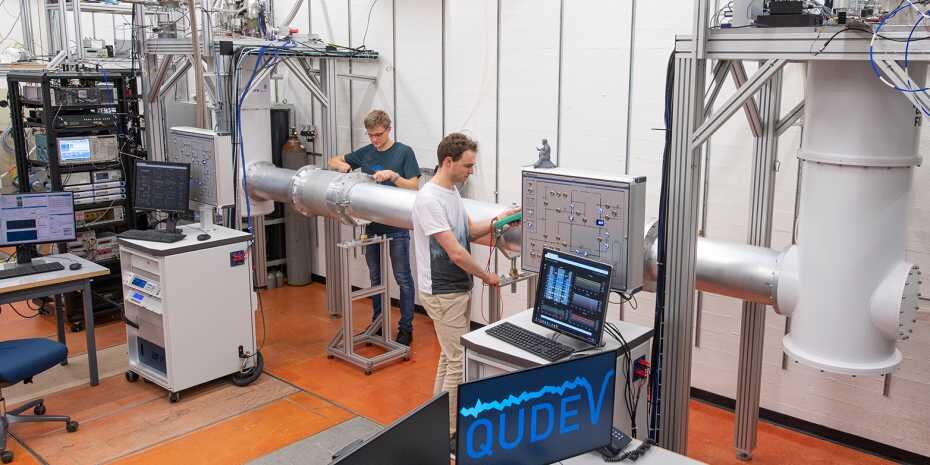
Physicists at ETH Zurich have demonstrated a five-meter-long microwave quantum link, the longest of its kind to date. It can be used both for future quantum computer networks and for experiments in basic quantum physics research.
Qubits based on superconducting electrical oscillators, such as those used in the quantum chips in ETH’s lab (and also by IBM and Google), need to be cooled down to temperatures close to the absolute zero. The challenge was to connect two of those superconducting quantum chips in such a way as to be able to exchange superposition states between them with minimal decoherence. This happens by means of microwave photons that are emitted by one superconducting oscillator and received by another. In between, they fly through a waveguide, which is a metal cavity a few centimeters in width, which also needs to be strongly cooled so that the quantum states of the photons are not influenced.
The physicists at ETH not only showed that the quantum link can be sufficiently cooled down, but also that it can actually be used to reliably transmit quantum information between two quantum chips. To demonstrate this, they created an entangled state between the two chips via the quantum link. Such entangled states, in which measuring one qubit instantaneously influences the result of a measurement on the other qubit, can also be used for tests in basic quantum research. In those “Bell tests,” the qubits must be far enough apart from each other, so that any information transfer at the speed of light can be ruled out. (Phys.org)
